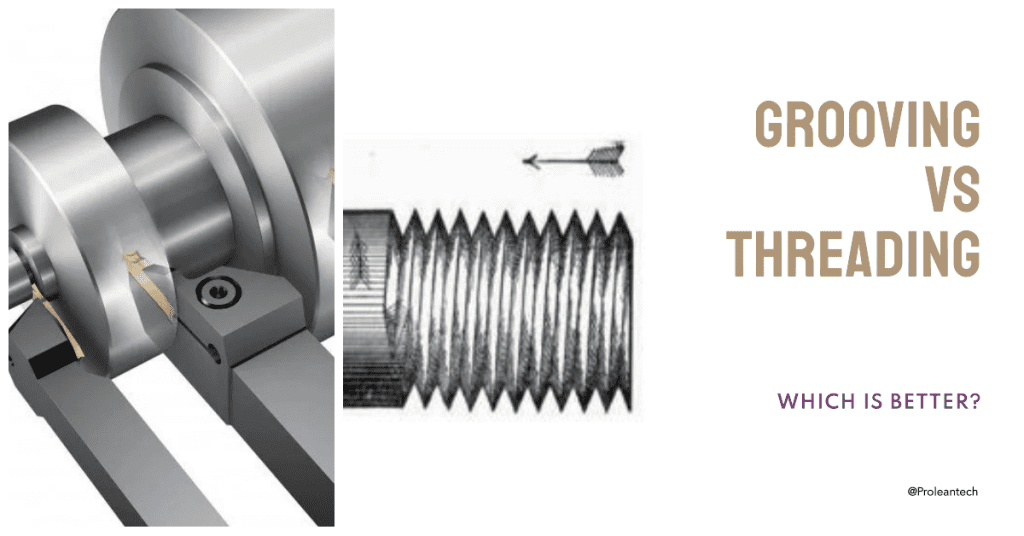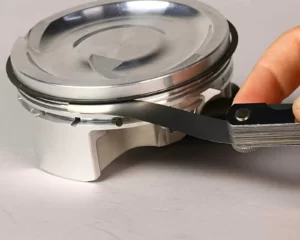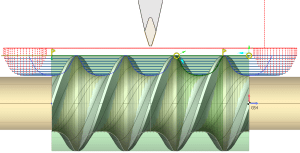“This article aims to provide a comprehensive comparison of two popular machining techniques: CNC grooving and CNC threading.”

Machining processes are essential operations in the manufacturing industry, where raw materials are transformed into desired parts and components. These processes involve the use of specialized tools and equipment to cut, shape, and remove material to meet specific design requirements. There are various machining processes, each with its unique advantages and applications.
Overview
CNC grooving and CNC threading are both machining processes that are commonly used in the manufacturing industry. They involve the use of computer numerical control (CNC) machines to produce parts with high accuracy and precision. CNC machines are automated and remove the need for manual intervention, resulting in reduced human error and increased efficiency. The following sections will discuss the CNC grooving and threading techniques in detail, highlighting their advantages, applications, and differences.
The CNC Grooving Technique

CNC grooving is a machining process that involves the creation of precise and accurate grooves in a variety of materials, including metals, plastics, and ceramics. This technique offers several advantages, including the ability to produce complex geometries reduce human error, and increase efficiency.
Advantages of CNC Grooving
CNC grooving offers several advantages that make it a preferred technique in various industries. First, it allows for the creation of precise and accurate grooves in a variety of materials, including metals, plastics, and ceramics. This high level of accuracy ensures that parts fit together perfectly, improving the overall performance and lifespan of the final product.
Second, CNC grooving enables the production of complex geometries that may not be achievable using traditional machining methods. This versatility enables manufacturers to create intricate designs and patterns that meet specific requirements and improve the functionality of their products.
Lastly, the use of CNC machines in grooving processes results in reduced human error and increased efficiency. This not only leads to cost savings for businesses but also ensures that parts are produced consistently and within tight tolerances, further improving product quality.
Applications of CNC Grooving
CNC grooving is widely used across various industries, including aerospace, automotive, medical, and electronics, to create grooves in different materials. Some common applications include:
- Manufacturing gears, where grooves are created to accommodate teeth that interlock with other gears to transmit motion and power.
- Producing seals and gaskets, where grooves help to secure the seal in place and provide a leak-proof barrier.
- Creating channels for fluid flow in hydraulic and pneumatic systems, where grooves help to direct and control the flow of fluids.
The CNC Threading Technique
The CNC threading technique is another popular machining process in the manufacturing industry. Similar to CNC grooving, CNC threading involves the use of computer numerical control (CNC) machines to produce parts with high accuracy and precision.

3D model for threading
Advantages of CNC Threading
CNC threading offers several benefits that make it a popular technique in various industries. First, it provides a high level of accuracy and precision, ensuring that threads are produced consistently and within tight tolerances. This is particularly important for applications where parts need to be assembled and disassembled frequently, such as in the automotive and aerospace industries.
Second, CNC threading allows for the production of threads in various sizes and pitches, enabling manufacturers to create custom parts that meet specific requirements. This versatility is crucial in industries where standard thread sizes may not be suitable, such as in medical equipment manufacturing.
Lastly, the use of CNC machines in threading processes minimizes the risk of human error and improves efficiency. This results in cost savings for businesses and ensures that threaded parts are produced consistently and within tight tolerances.
Applications of CNC Threading
CNC threading is used in a wide range of industries, including aerospace, automotive, medical, and electronics, to produce threaded parts. Some common applications include:
- Manufacturing bolts, screws, and fasteners, where threads are required to secure parts together.
- Producing threaded components for engines, transmissions, and other automotive systems.
- Creating custom threads for medical equipment and devices, such as orthopedic implants and surgical instruments.
Grooving vs Threading
| Factor | CNC Grooving | CNC Threading |
|---|---|---|
| Accuracy and Precision | Both techniques offer high levels of accuracy and precision. However, CNC threading may require more passes and adjustments to achieve the desired thread profile, potentially reducing efficiency compared to CNC grooving. | Both techniques can provide the necessary precision in applications where accuracy is crucial. |
| Material Removal Rate | CNC grooving typically has a higher material removal rate than CNC threading, resulting in reduced cycle times and increased efficiency for manufacturers. | Both techniques can be suitable choices in applications where material removal rate is not a critical factor. |
| Tool Life and Wear | Tool life and wear can vary depending on the material being machined, the tool geometry, and the cutting parameters used. In general, CNC grooving tools tend to have a longer tool life than threading tools, as they are often subject to less heat and stress during the machining process. | Tool life and wear can vary depending on the material being machined, the tool geometry, and the cutting parameters used. |
| Surface Finish and Quality | Both techniques can produce parts with high-quality surface finishes. However, the specific surface finish achieved depends on various factors, including the material being machined, the tool geometry, and the cutting parameters used. | Both techniques can provide suitable results in applications where surface finish is a critical factor. |
Consider Factors
When deciding between CNC grooving and threading, several factors should be considered, including:
- The desired part geometry and dimensions
- The material being machined
- The required accuracy and precision
- The desired material removal rate
- The required surface finish and quality
- The available tools and equipment
By considering these factors, manufacturers can select the most appropriate technique for their specific application.
Software and Tools
To achieve optimal results with CNC grooving and threading, manufacturers should use specialized software and tools designed for these processes. This software typically includes features such as toolpath generation, simulation, and post-processing, which can help to improve accuracy and efficiency. Additionally, selecting high-quality cutting tools and tool holders can further enhance the performance and longevity of the machining process.
Case Studies
Numerous manufacturers have successfully implemented CNC grooving and threading techniques in their production processes, resulting in improved quality, efficiency, and cost savings. For example, a manufacturer of hydraulic components used CNC grooving to create precise channels for fluid flow, resulting in improved performance and reduced leakage. Another manufacturer of automotive components used CNC threading to produce custom threads for engine components, resulting in improved fit and function.
CNC Grooving and Threading Machining at ProleanTech
At ProleanTech, we provide expert CNC grooving, threading, and other machining services using advanced CNC technology and experienced engineers. Our state-of-the-art equipment and software enable us to produce parts with high accuracy and precision, ensuring consistent quality and performance.
Whether you need custom grooves or threads for your components, we can provide the solutions you need to meet your requirements and exceed your expectations.
Conclusion
CNC grooving and threading are both popular machining techniques used in various industries to produce parts with high accuracy and precision. Both techniques offer unique advantages and applications, and the choice between them depends on various factors, including the desired part geometry, the material being machined, and the required accuracy and precision. By considering these factors and using specialized software and tools, manufacturers can achieve optimal results and improve the quality, efficiency, and cost-effectiveness of their production processes.
FAQ’s
What is CNC grooving?
CNC grooving is a machining process that involves the use of computer numerical control (CNC) machines to create precise and accurate grooves in various materials, including metals, plastics, and ceramics.
What is CNC threading?
CNC threading is a machining process that involves the use of CNC machines to produce threads in various sizes and pitches, enabling manufacturers to create custom parts that meet specific requirements.
What are the advantages of CNC grooving?
CNC grooving offers several advantages, including the ability to produce precise and accurate grooves, create complex geometries, and reduce human error and increase efficiency.
What are the applications of CNC threading?
CNC threading is used in various industries, including aerospace, automotive, medical, and electronics, to produce threaded parts for bolts, screws, fasteners, engines, transmissions, and other applications.
How do I choose between CNC grooving and threading?
When selecting between CNC grooving and threading, several factors should be considered, including the desired part geometry and dimensions, the material being machined, required accuracy, and precision, material removal rate, required surface finish and quality, and available tools and equipment.




0 Comments